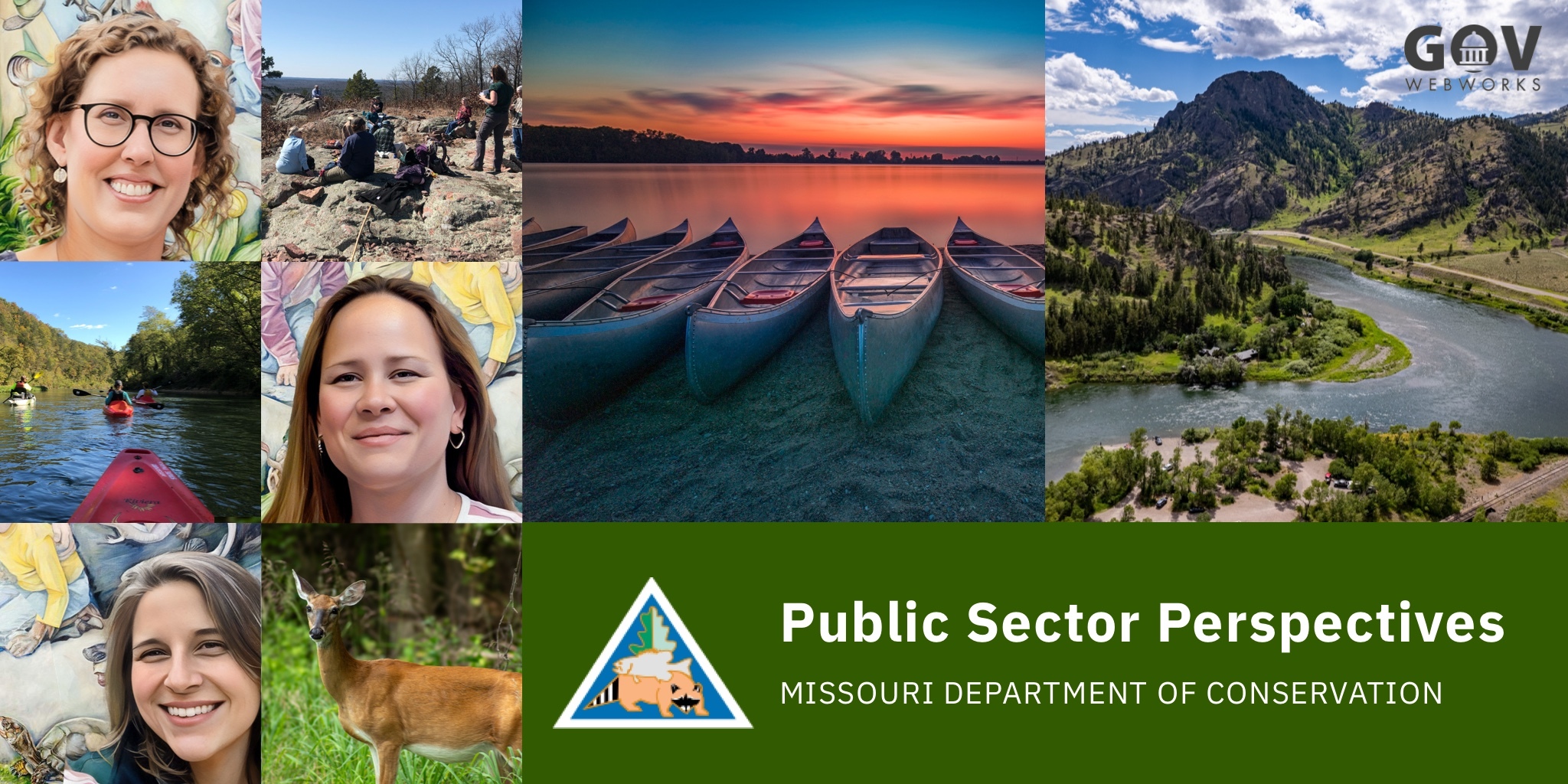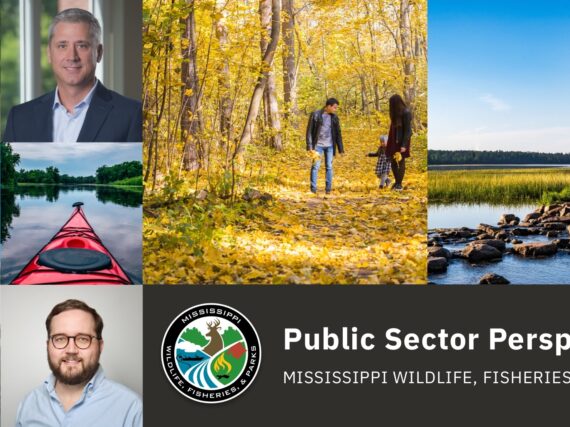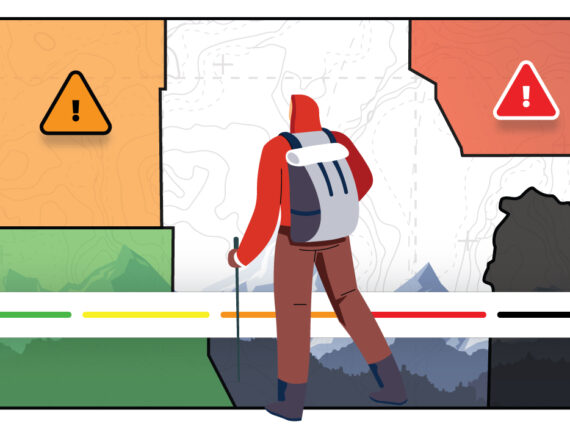Education plays an important role in conserving wilderness and recreation areas. We spoke with three key players in the Missouri Department of Conservation’s (MDC) education programming to learn more about how Missouri fosters conservation, recreation, and a love of the outdoors.
Mary Beth Factor bridges the gap between formal and non-formal education as part of Discover Nature Schools (DNS), a free resource designed to align with Missouri science education standards. As the DNS Curriculum Coordinator, Mary Beth coordinates Department provided education products which are shared at no-cost to formal and homeschool educators, ensuring alignment with MDC’s mission to conserve the state’s fish, forests, and wildlife.
Amy Buechler serves as the Recreational Use Manager within MDC’s new Relevancy Branch. Amy’s work addresses how the MDC can remain relevant to the public, especially those who do not traditionally engage in hunting or fishing. Her team focuses on broadening recreational opportunities on conservation lands, from hiking, biking, and camping to more unique uses, such as recreational drone use or hosting events like weddings.
Kat Lackman is the Public Use Data Coordinator in MDC’s Recreational Use section. Her role involves overseeing mapping and locational data to ensure visitors have accurate information on facilities like parking, boat ramps, and restrooms, available on maps, the MDC website, and their apps.
Here’s what they had to say about the important work they do.
What are the benefits of conservation education?
Mary Beth: When students actively engage with the natural environment—observing wildlife, identifying native plants, and learning hands-on conservation practices—they develop a lasting respect and understanding of nature. Through these experiences, they’ll gain a foundational knowledge of ecology and conservation principles.
Surveys show that 88% of teachers believe their students’ interest in the outdoors has increased due to our curriculum. Students engage more with the natural world by exploring concepts like seasonal changes in bears or the functionality of bird beaks.
There’s often a disconnect between people and nature, which can be passed down. Studies show that fear of animals, like snakes, isn’t innate but learned from adults’ reactions. By teaching conservation, we can help students appreciate the role of all organisms—including insects, birds, and native plants which play a critical role in our ecosystems.
What are the goals of the Discover Nature Schools program?
Mary Beth: Our primary goal is fostering conservation awareness and respect for nature through science for pre-K to 12th-grade students and teachers by providing free, accessible conservation and science education materials. Our priority is meeting state and national science standards through conservation practices and garnering student connections to local Missouri ecosystems.
Through place-based learning, we help students connect with and develop respect for local ecosystems, which are often overshadowed by the focus in standard curricula on wildlife beyond Missouri.
Discover Nature Schools (DNS) was created to support the current state science standards, and the curriculum continues to evolve as state science standards update. We strive to keep the MDC Teacher Portal updated according to teachers’ classroom needs, ensuring PDFs are accessible and 508 compliant, allowing E-readers to read content. Any Missouri resident can order these resources, which are funded through our state’s 1/8 of 1% sales tax dedicated to conservation.
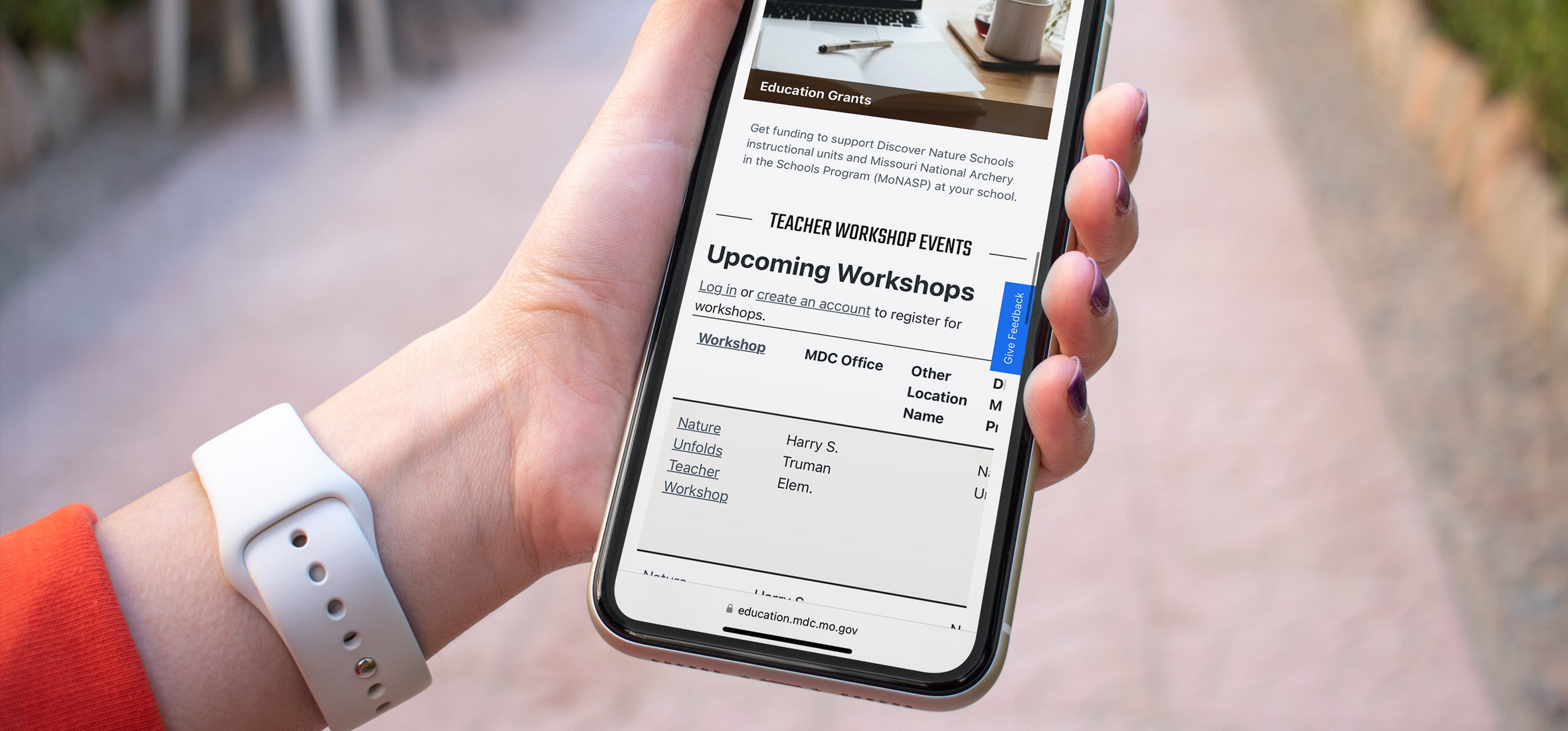
What topics does the Teacher Portal cover?
Mary Beth: We aim to spark students’ interest in Missouri’s fish, forests, and wildlife. The units align to all Missouri Learning Standards in Science and the Next Generation Science Standards.
Kindergartners build bear dens and model how animals adapt to winter conditions, meeting engineering standards. In second grade, students explore seed dispersal, engineering their own models to understand how seeds travel. Our middle school curriculum, “Nature Unhooked,” lets students fish while studying the water column and fish adaptations.
We found that teachers needed materials that fit the specific science standards and reading levels for each grade, so to meet this need, we broke down the curriculum by grade and added some new units that include:
- Kindergarten: Bears Through the Seasons (2022)
- First Grade: Exploring Missouri (2023)
- Second Grade: Life and Land in Missouri (launching in 2025)
What are some challenges you face?
Mary Beth: Teacher turnover and time dedicated to science are just a few of the major barriers. Teacher burnout is real and it impacts the students, schools and communities, and when we lose quality teachers who garner a passion for teaching outside and connecting students to nature, this is a real loss.
Furthermore, with the emphasis in education on English Language Arts and Math, the time dedicated for elementary science is often tacked on at the end of the day, which also impacts time for outdoor student investigations.
It takes time to prepare and execute outdoor lessons, and teacher preparation time is declining or nearly non-existent for many teachers. Dedicated Discover Nature Schools teachers go above and beyond and we are extremely thankful for their commitment.
In the vein of remaining relevant to teacher and student needs, we are working with a contract group to develop a digital version of the middle school curriculum, Nature Unhooked. Our hope is that the digital format will make future updates easier compared to updating print copies. The digital curriculum will launch in August 2025 through the MDC Teacher Portal.
What are the educational goals of the Recreational Use program?
Amy: Missouri has around 1,000 conservation areas managed by MDC, creating both a significant opportunity and a challenge in communicating about each area. While some developed nature centers are accessible and staffed, most of our conservation areas are more primitive, often just a parking lot and open spaces. Some areas offer amenities and signage, while others are much more rugged but still offer great experiences if visitors are prepared.
Our goal is to help the public understand what to expect and prepare for when visiting our conservation areas.
We want to make it as easy as possible for people to find places to visit and know what to expect before they get there. If someone wants to hike near Jefferson City or go fishing with their family while traveling, they can quickly find options on our website or through the MO Outdoors app. We also want users to be able to look at a map and easily see if hunting is permitted or if biking is allowed.
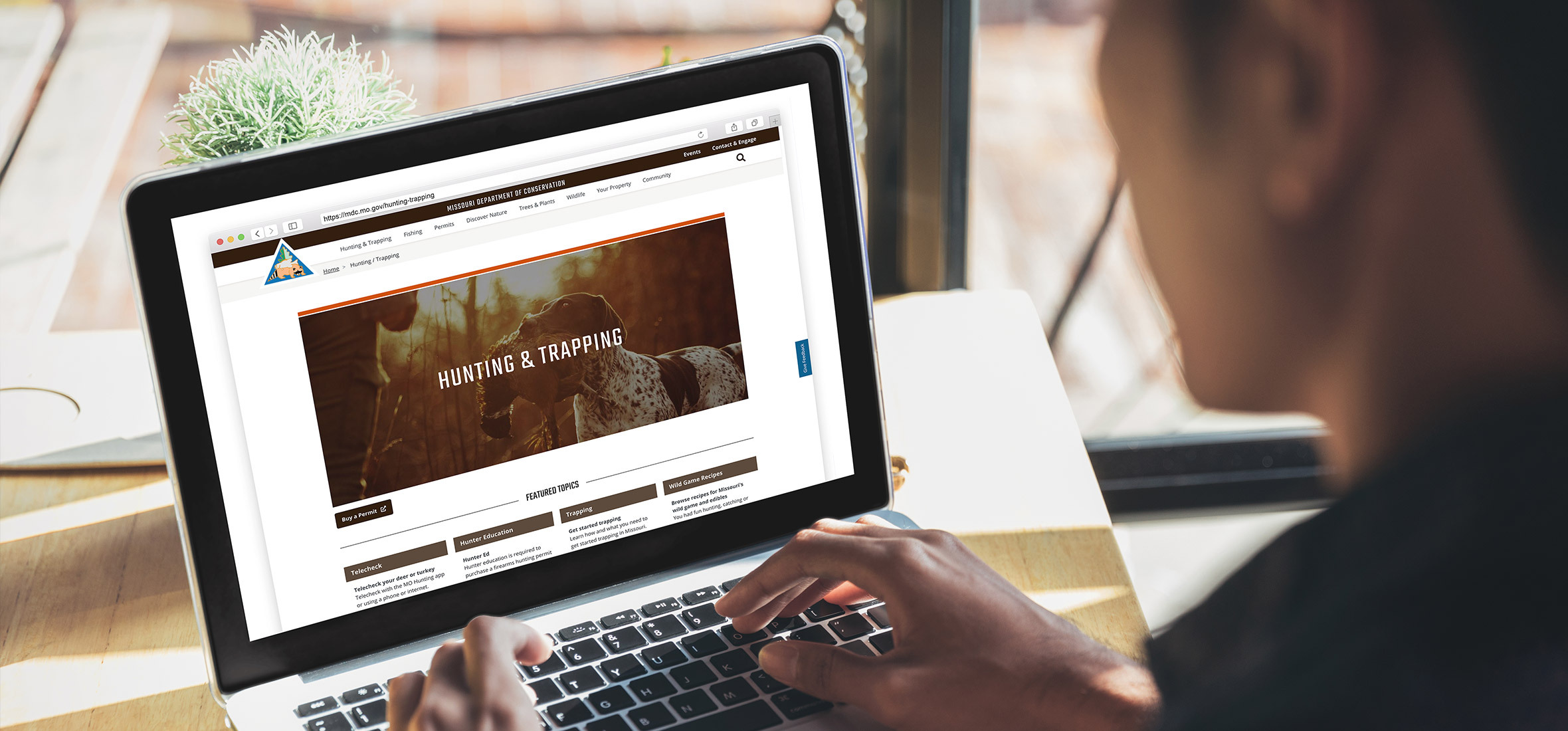
What formats do you use?
Our three primary channels are signage, our website, and apps, aiming to clarify what’s allowed at each location, along with any special updates like closures or seasonal advisories.
Amy: We aim to make sure all information is accurate and available in accessible formats beyond traditional brochures, allowing people to find details that match what MDC offers.
What are some key recreational topics covered?
Amy: Our communications team shares seasonal information to keep users aware of various activities. When we expanded bike access, for example, we notified hunters to expect more cyclists in certain areas. Our online tools and apps are crucial for this.
Explaining our rules is a big priority, especially around “leave no trace” principles. We encourage respect for others on shared trails and provide guidance on etiquette.
For example, when horses, bicycles, and hikers share a trail, we offer reminders on who yields to whom, so everyone has a safe and enjoyable experience.
How do you keep information up-to-date?
Kat: My role is to share the information I get from our staff with the public so they know what activities are allowed in certain areas and what resources are available.
We’re managing multiple formats to ensure the data is up-to-date and easy to understand: brochures, our app, and our website. We aim for consistency so that if someone picks up a paper map, they’ll find similar information on our app.
Internally, we use an application where staff can make edits that automatically update our digital platforms, so it’s a mix of manual and electronic updates to keep everything current. We also work with third-party apps not directly affiliated with MDC. These are typically trail, hunting, or fishing apps that want to share our information with their users. We provide them with properly maintained data to ensure accuracy, so people know where they can hike, fish, or hunt without any issues.
Since paper maps require a separate update process, this means maintaining separate updates across platforms. We are working toward a “one-stop-shop” approach for these updates. As not everyone uses GIS software, ensuring that data is in a format that third-party apps can use effectively is another initiative.
What are some future goals for each of you?
Mary Beth: Since we work with teachers frequently, professional development time for attending conferences would help us stay current with changes in education. This way, we can better understand what updates we need to make to remain relevant, such as moving toward more digital curriculum options.
Kat: My goal is improving accessibility to our information and ensuring clear lines of communication at all levels.
Amy: Another key goal is building relationships with constituents across Missouri and maintaining open communication with field staff. This helps statewide coordinators understand local needs, so we aren’t simply offering a “one-size-fits-all” approach based on statewide recommendations alone.
Learn more
- Missouri Department of Conservation website
- MO Outdoors app
- MDC Teacher Portal
- Discover Nature Schools
- Contact us to learn more about developing a conservation or recreation website
